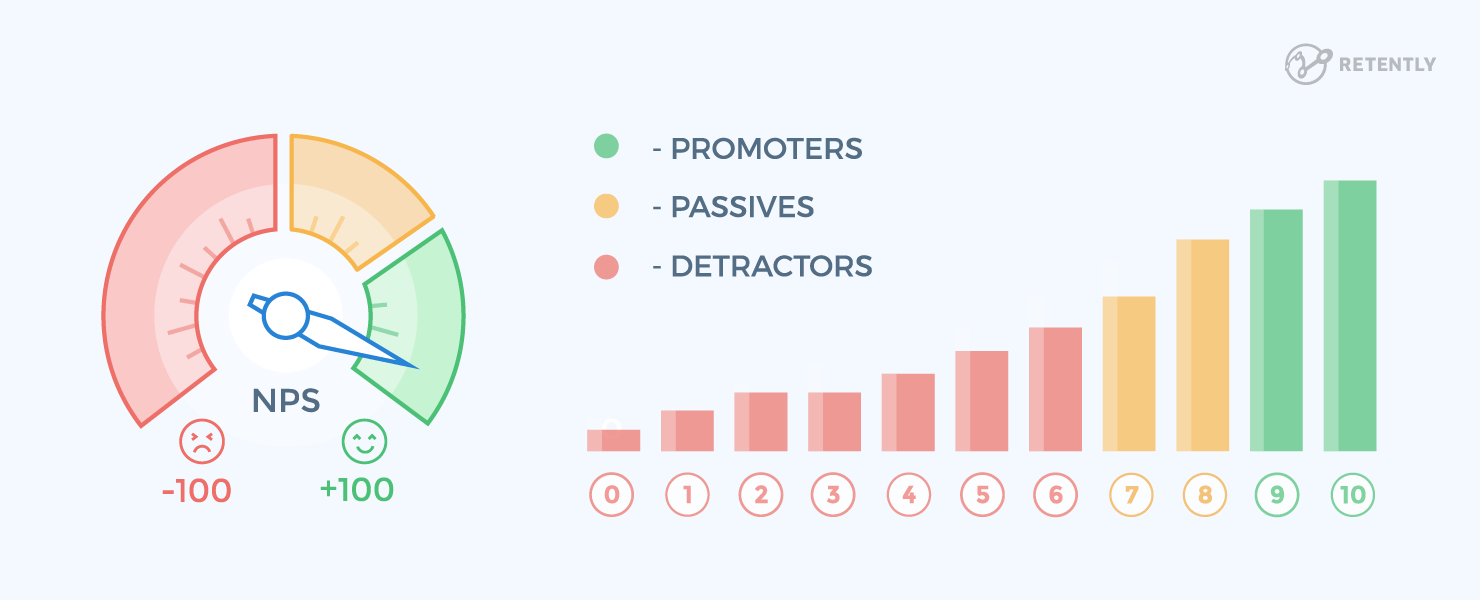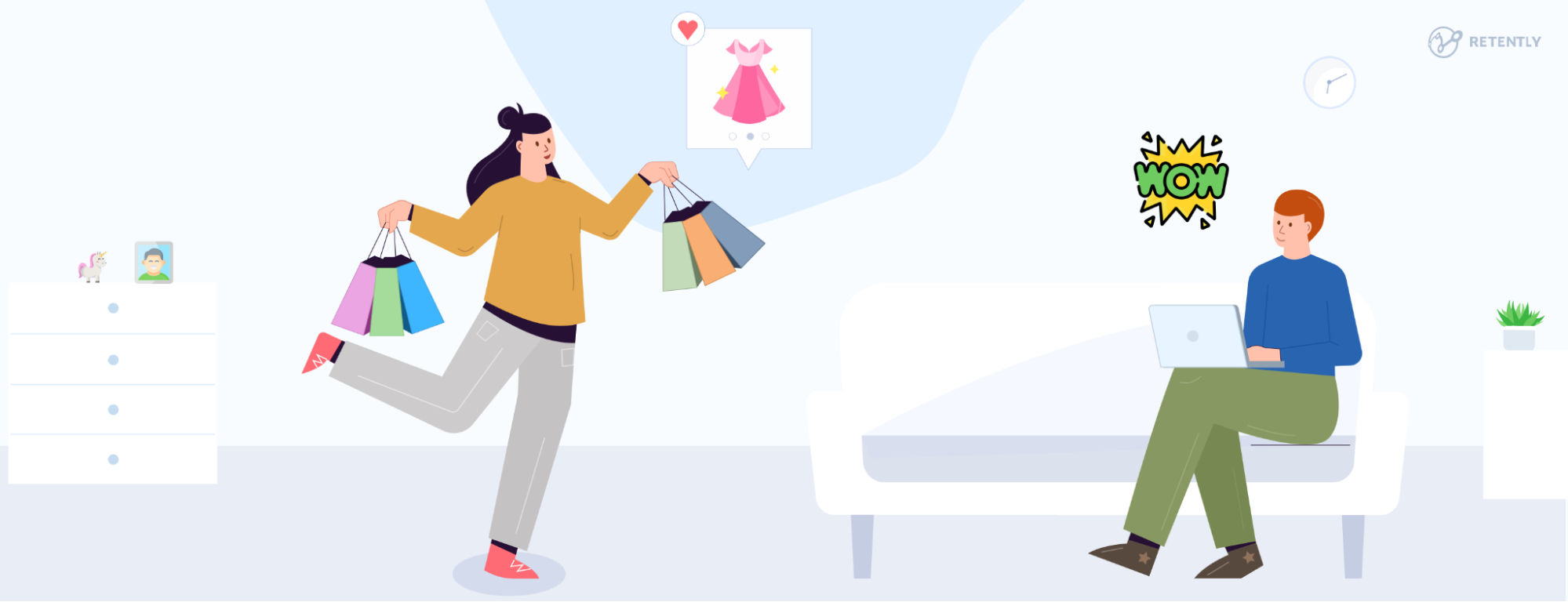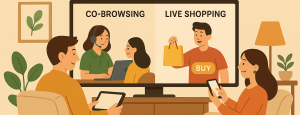Table of Contents
Do you know how many customers talk about your brand to others in a positive light? Do you capitalize on that information to drive more sales, brand engagement, and to attract new clients? Over the past years, it has become clear that advocacy marketing is vital for a brand’s development and its ability to stay relevant in its niche.
Key Takeaways
- Referral programs effectively leverage customer satisfaction to expand the customer base.
- Encouraging customers to create content that showcases your products turns authentic experiences into powerful marketing tools.
- Involving influencers and loyal customers can reinforce your brand’s message and reach new audiences.
- Personalizing your marketing can create a meaningful bond with customers, making them feel valued and connected to the brand.
What Is Advocacy Marketing
Simply put, advocacy marketing is getting existing customers to share their positive experience with your company to other people. It prompts the most enthusiastic customers to amplify the voice of your brand and thus bring in more business.
Marketing effectiveness is increased by around 54% when advocacy is employed, making advocate marketing one of the most affordable ways to bring in more customers at a very low cost.
To give you an idea of how it generally works, and to show you what kind of strategies you can put into practice to mobilize your brand promoters, we’ve highlighted some notable examples from the world’s top companies below.
Advocacy Marketing Examples
Both small and big companies employ advocacy strategies, so there are many examples to choose from. Following research, in our personal opinion, these are the advocacy marketing campaigns that deserve the spotlight:
1. Tesla’s Advocacy Marketing
Tesla found a great way to mobilize their loyal customers to attract even more clients. And not just any clients, but people who view their brand in a positive light because the person who refers them is someone close, happy with Tesla.
Basically, Tesla implemented referral packages that gave both the referred person and the existing customer amazing discounts – a $1,000 discount on a new order for both of them, in fact.
That wasn’t all, though. Tesla offered existing customers even more motivation – if they referred 10 people, they got the right to buy a limited Founder Series of the brand’s Model X SUV that wasn’t sold to the public. What’s more, the first person to do that also got the vehicle for free.
Tesla’s referral programme changed a lot over time, surprising the owners and new buyers with original prizes ranging from free new Roadsters to tours for two of the SpaceX headquarters in Los Angeles, a photo launched into deep space orbit, 5,000 miles of free Supercharging or an invite to a Tesla event.
For about two years, Tesla’s referral programme was limited to solar roofs and panels, customers being able to earn $500 for each solar roof referral and $300 for each solar panel referral. It was later revamped to offer credit points for referrals and purchases that could be redeemed for items in Tesla’s online store or raffle entries. That might not be as exciting as a new car, but they still rely on their loyal customers to promote their brand rather than spending on traditional advertising.
Takeaway
Advocacy marketing goes hand in hand with referral marketing – you motivate loyal customers to promote your brand, and in return get new business, as people are generally more likely to make a purchase when referred by a friend.
You don’t really have to offer expensive rewards just like Tesla, but you can follow their example and make it fit your own budget.
2. Starbucks’ Advocacy Marketing
Starbucks’ advocate marketing campaign was called Tweet-A-Coffee. The idea was pretty simple – it would allow customers to buy a $5 gift card for their friends through Twitter. Customers just had to Tweet the @tweetacoffee handle alongside the recipient’s own Twitter handle. The first 100,000 people who joined the program also got a $5 gift card themselves.
Besides being a profitable strategy (generating around $180,000 in sales for Starbucks), it also allowed the brand to identify both loyal advocates and potential customers (over 27,000 brand advocates alone participated) they can engage with to boost sales even more down the road.
Takeaway
Your client advocacy marketing strategy shouldn’t just always focus on profit. Sometimes, it pays off to find out exactly which of your clients are customer advocates so that you can engage with them to drive more brand loyalty and attract new clients to boost long-term ROI.
3. Apple’s Advocacy Marketing
Apple is very well-known for how much it appreciates user-generated content, and it’s no surprise they based their own advocacy marketing strategy on that. Apple’s “Shot on iPhone” campaign sourced dozens of pictures from Apple users from all over the world.
The idea was straightforward – Apple asked users to share photos they took with their iPhones on social media, using a designated hashtag. The company then proceeded to pick the photos it liked the most, and use them on public transit and billboard ads.
Out of the numerous photos that were posted (many people lined up at the opportunity to become an Apple “star”), Apple settled on shots from 77 people from 24 countries – plenty of material for ads, and barely any editing required on their part (the photos were the ads, with only the “Shot on iPhone” phrase over them).
Takeaway
When it comes to ads, you don’t always have to spend time and money on copy and design – you can let your loyal customers handle that for you. Using their content in your ads (or as your ads) makes them feel more natural, and makes it easier for consumers to relate to them (in this case, the fact that the photos didn’t seem staged really helped the ad feel genuine and not forced or fake).
Also, ads don’t always have to be grandiose and expensive – minimalist and cost-efficient ads can be very efficient too.
4. Cisco’s Advocacy Marketing
When Cisco became aware they had a many advocates who liked showcasing their networking expertise, they decided to take advantage of it. To do that, they started the Cisco Champions program, a community initiative that encouraged said advocates to talk about Cisco’s brand across their networks and social media channels. In return, Cisco offered them a way to network with relevant peers, highlight their expertise, and improve their IT skills and knowledge.
Examples of the program’s engagement included having influencers write articles on Cisco’s blog, participate in #CiscoChat on Twitter, take part in the company’s weekly podcasts where they get to interview Cisco’s experts, and show up in the brand’s Engineers Unplugged video series.
Besides the exposure, Cisco offered their loyal customers other rewards such as exclusive event invitations, early access to new products, the chance to discuss technology-related topics with Cisco’s top engineers, etc.
The results were pretty decent – the Cisco Champions program managed to:
- Generate around 55,000 Cisco-related Tweets;
- Convince promoters to author 100 posts on Cisco’s own blog, which resulted in over 8,000 social media mentions and over 44,000 hits;
- Encourage influencers to write over 200 Cisco-related articles and posts on their websites and blogs.
Takeaway
Don’t be afraid to turn loyal, knowledgeable influencers into customer advocates, and use them as an excellent source of quality content, PR, and referrals. Actively ask them to share their opinions and expertise with your audience and their own too (just ask them to mention your brand when they do that). And, of course, reward and acknowledge their contributions.
5. Gap’s Advocacy Marketing
Nowadays, Gap is a well-known clothing retailer. But back in 2010, the company – while quite big – was still working on building its brand to make it more popular. In the same year, the company teamed up with Groupon to offer consumers a deal they could hardly refuse – a 50% discount on $50 purchases during a single day.
As risky as such a strategy sounds, it was resoundingly successful. It got to the point where 534 Gap offers were being sold per minute before the midday of the release date. Obviously, it all paid off, with the company earning around $11 million in revenue.
But besides that, we should also consider how much the brand won in terms of advocacy marketing – numerous people took to social media on that day to let others know about the offer. Plus, it was the kind of deal that likely got people talking with their friends, family, and even work colleagues about it. All in all, the brand created a lot of social media buzz during that day, and the audience’s attention kept up after it as well.
Takeaway
Gap has the simplest lesson to teach us all – that, sometimes, risks are worth taking. Given the huge discounts the brand offered, there was a chance they could lose a lot of money (just imagine how much it cost them to cover the social media and email marketing expenses, plus the cut Groupon took) if things didn’t work out the way the company intended.
Sure, tested and proven strategies should take priority, but trying out a new approach to advocacy marketing (that carries some risk) can be worth it – provided the company can afford to deal with a potentially negative outcome, and that the advocacy campaign is well thought-out.
6. Okta’s Advocacy Marketing
Back in 2016, Okta, a big identity management company, decided their annual event (called Oktane) was a good opportunity to try and build a stronger, closer relationship with their customers in hopes of turning them into brand promoters.
As vague and difficult as a task like that can sound, Okta found the perfect solution – they made their customers the main focus of their event. The marketing team created a program called Okta Ozone, to encourage existing loyal customers to drive event sign-ups by mentioning the event on their social media profiles and helping promote it online.
On top of that, during the event, the company emphasized challenges to engage advocates and customers, held a special lunch, and offered unique awards to recognize the efforts of their loyal customers in promoting Oktane. Event sessions and keynotes also focused on mentioning and thanking advocates.
The results speak for themselves. According to the company:
- The hashtag “#Oktane16” generated around 1.1 million social impressions.
- The brand saw a 34% increase in engagement with their customers.
- 38 brand promoters were willing to share their success stories with Okta during the event.
Besides all that, you should also consider all the pre-event buzz the company generated, as well as on-site engagement and post-event feedback.
Takeaway
Sometimes, showing appreciation for your customers (especially the loyal ones) can go beyond a simple “thank you.” You don’t necessarily need to do something huge like Okta did, but something like a celebratory dinner for your promoters, or a customer appreciation day or party won’t hurt.
7. Coca-Cola’s Advocacy Marketing
One of the company’s most inspiring campaigns – “Share a Coke” – started off in Australia and enjoyed an amazing customer engagement worldwide. The campaign aimed to connect with their customers at a more personal level, shifting the focus from the product itself to the individual – a campaign that was about them.
The idea was quite simple – to replace the traditional logo by “Share a Coke with” followed by a person’s name or a generic name (mom, dad, mate, bestie, etc.) with the idea to get together and share a special moment over a Coca-Cola. They started off with 150 most popular names to then encourage people, as the campaign’s popularity grew, to vote online for the names they would like to see on their bottles (with 65,000 people participating in the vote).
The brand set in motion the idea of sharing in an emotional way – encouraging loyal customers to show care towards family and friends, offering them a reason to connect with the ones they have lost contact with or why not get in touch with someone they want to know – giving them the necessary tools to connect and share special moments in the real and online worlds.
The campaign rolled-out on multiple channels, given the well-spread myth you must spend a lot to get your message noticed. Yet, it was the brand’s first campaign with digital at heart which inspired many marketers thereafter to explore the online environment more, and instead focus efforts on building ideas people can relate to.
The results surpassed the expectations. According to the company:
- The campaign increased the brand’s category share by 4% and young adults’ consumption by 7%, after a steady decline in sales for years;
- Only in Australia, after the initial release, 76,000 virtual Coke cans were shared online and 378,000 custom Coke cans were printed at local malls across the country;
- The #shareacoke hashtag was used 496,000 times on Instagram and 89,000 times on Twitter, social networks being the sales’ key drivers.
Takeaway
The campaign outlined the importance of bringing personalization to the mix and connecting at a more personal level with the audience. Motivating loyal customers to spread the word about your brand does not necessarily require an incentive. Making them feel important, via relatable experiences that weave their way into their personal lives, will determine them to drive your success.
8. Sephora’s Advocacy Marketing
Sephora’s Beauty Insider Community turns customers into brand advocates through an engaging and rewarding platform. This hub let’s beauty enthusiasts share tips, reviews, and recommendations. Members earn points on purchases, redeemable for exclusive products, experiences, and discounts that encourage ongoing engagement.
In 2024, Sephora gave a special shout-out to their ambassadors, a group of 20 active members who make the community even better. These ambassadors participate in various activities such as sharing shopping hauls, creating and curating threads in the Forum, and answering questions in the Q&A section. They even represent the community at events like SEPHORiA, inspiring more people to join.
This approach highlights the power of community-driven marketing in building brand loyalty. With initiatives like special badges for ambassadors and ongoing engagement opportunities, the brand makes sure its community remains active while fueling organic word-of-mouth. Happy members eagerly share their positive experiences, attracting new customers and expanding Sephora’s community.
Takeaway
Build a community around your brand where customers can interact, share their experiences and become advocates. Keep them engaged and loyal by offering meaningful rewards and exclusive content.
9. Nike’s Advocacy Marketing
Nike has nailed advocacy marketing by using both star athlete endorsements and its connection with everyday customers to tell a compelling brand story. By teaming up with sports icons like LeBron James, Serena Williams, and Cristiano Ronaldo, Nike boosts visibility and aligns the brand with greatness and innovation. This inspires deeper connections with fans.
A big part of Nike’s strategy is user-generated content, encouraging customers to share their personal experiences and achievements with its products. Campaigns like “Just Do It” and “Dream Crazier” encourage people to dream big and push boundaries, reinforcing messages of empowerment and resilience. This fosters a sense of belonging and turns customers into brand advocates who spread positive word-of-mouth.
Alongside traditional media, Nike leads in digital marketing, engaging audiences on Instagram, Twitter, and YouTube with interactive content and campaigns. To name a few, consider initiatives like #BetterForIt and #PlayInside, #PlayForTheWorld, which prompted users to share their fitness journeys and stay active during challenging times. With over 300 million followers on Instagram alone, Nike’s social media presence is massive.
Nike’s marketing strategy leverages emotional branding to connect deeply with consumers through inspiring stories and universal topics. This approach has led to significant sales growth, including a 42% increase within the LGBTQ+ community and a 25% increase in Gen Z engagement. Additionally, Nike’s inclusive campaigns have fostered exceptional customer loyalty, with 78% of consumers feeling an emotional connection to the brand.
This blend of digital engagement and advocacy marketing helps Nike maintain a strong presence worldwide and inspire a diverse audience to align with its values, regardless of age, gender, or fitness level.
Takeaway
Use various platforms to maintain engagement and visibility. Partner with influencers who match your brand values and encourage your customers to share their own stories. By leveraging emotional branding, you can create relatable content that resonates with your audience. This will help you appeal to a broad audience and make your brand part of their personal journey.
Identifying Brand Promoters
Advocacy marketing can be extremely profitable for your business, but here’s the thing many growth teams or even executives often overlook, (either by mistake or due to inexperience) when it comes to taking advantage of it – the first step isn’t brainstorming and putting together a proper marketing plan. The first step actually is finding out who your advocates are.
The truth is, you can’t mobilize loyal customers to promote your brand and help your marketing efforts if you don’t know them at all. How are you going to reach out to them, or how are you going to personalize your marketing messages to make them more engaging for them, for example?
To fix that, you usually have some general methods of identifying them at your disposal:
- Assigning a team member who would identify promoters by looking up who is engaging with your brand on social media.
- Running an advocacy marketing campaign whose main purpose is to help identify brand advocates – like Starbucks did.
- Setting up a loyalty program based on rewards – it makes it easier to identify promoters in the long run.
Still, while those methods are efficient, there is one often-overlooked way of finding loyal customers you should consider – using NPS® surveys. They are basically one-question surveys that ask your customers how likely they are to recommend your brand to others on a scale of 0 to 10. Depending on the answers, respondents are classified as such:
- 9-10 – Promoters
- 7-8 – Passives
- 0-6 – Detractors

The Promoters are your brand advocates, while the Passives and Detractors are hesitant or upset customers which you can turn into advocates with the right incentive and nurturing strategy. Best of all – Net Promoter Score® surveys can be run regularly and at different stages of the customer lifecycle, helping you constantly stay up-to-date with your customer sentiment towards your brand.
In case you know of other ways to identify customer advocates, feel free to let us know in the comments. Also, if you’re interested in starting an NPS campaign, make sure to check out Retently and give it a try during a free 7-day trial.



































 Alex Bitca
Alex Bitca 

 Greg Raileanu
Greg Raileanu 

 Christina Sol
Christina Sol 
